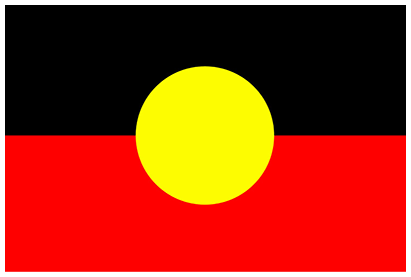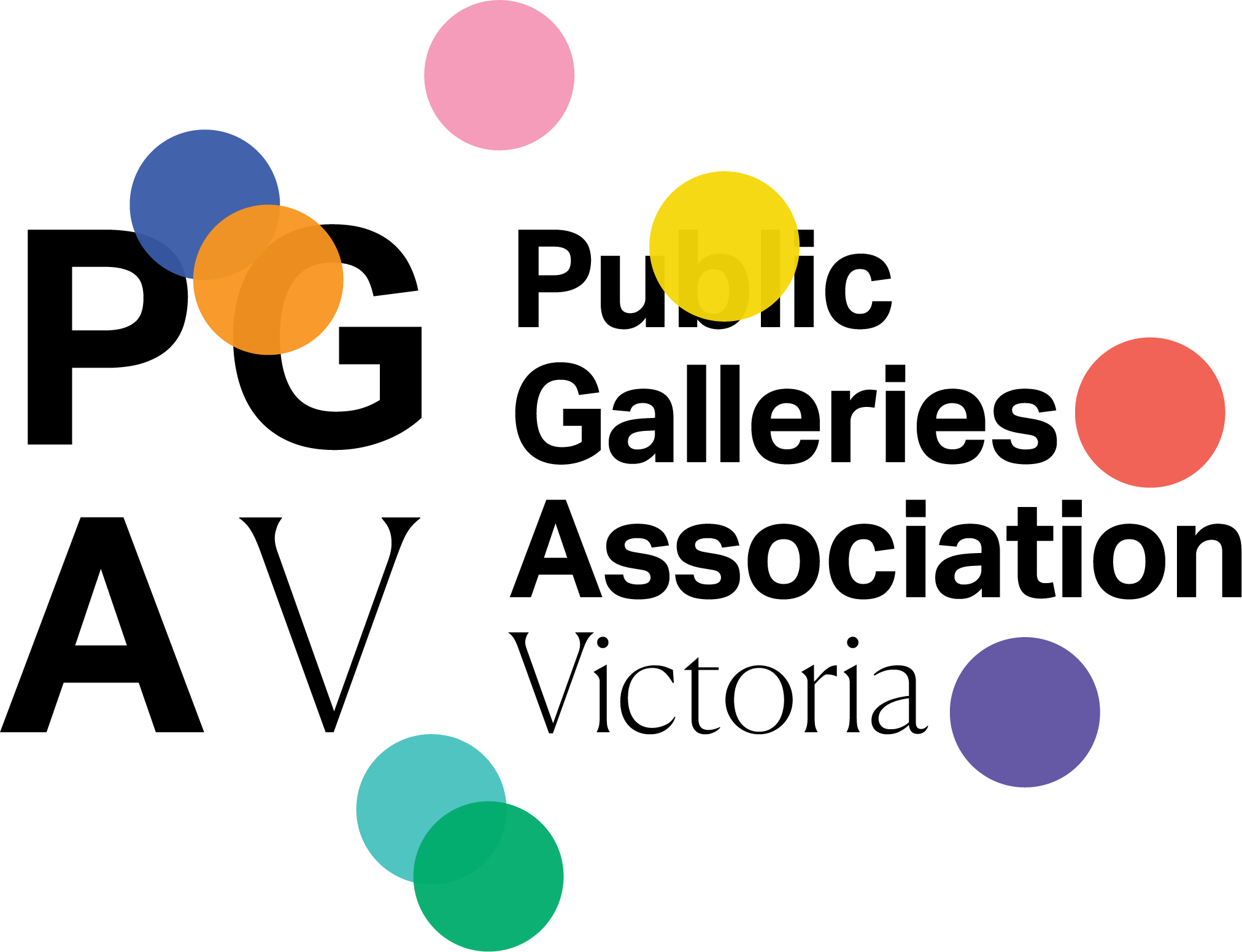Exhibitions Manager
Professions in the Public Gallery Sector

helen berwick
Education & Community Engagement Officer
Bayside Gallery
Image: Helen Berwick with school children viewing the exhibition Debbie Symons: Sing. Photo by Mark Ashkanasy.
Date: March 2023
the role of education manager
The Education Officer develops a program to encourage school visitation targeting primary, secondary and tertiary along with senior programmes. They identify opportunities to link curriculum outcomes with the exhibition program and may manage an outreach program. They lead a team of paid staff or volunteers that give talks to various age groups and write education material to promote the exhibitions and permanent collection.
For information about roles within public galleries see the PGAV Fact Sheet: Staffing Levels & Position Titles
How did you get started in your career and what formal qualifications or experience do you have?
I have been working in the arts and culture sector for the past 15 years, working for organisations and festivals in the not-for-profit sector, and State and Local Government. I have a Bachelor of Fine Arts, Masters of Teaching – Creative Arts, Post Graduate Certificate in Arts Administration, and a Diploma in Arts, Craft, and Design.
I really started my career when in my second year at Art School at the University of Tasmania, I was given the opportunity to become part of a brand-new young friends group at the Tasmanian Museum and Art Gallery. The Tmaggots, as they were known, were a volunteer group that ran events for 18 – 35 year olds to engage them in the museum and further arts and culture offerings in Hobart at the time. The planning and engagement was addictive, so when I finished Art School, I did a Post Graduate Certificate in Arts Administration that led me to gaining a position at Ten Days on the Island, a biennial international arts festival. After a few years there and at other arts and cultural organisations in Canberra, I knew I wanted to work more in the education and public programs area, so I completed my Masters in Teaching – Creative Arts. That led to a role as Education and Community Engagement Manager at Canberra Glassworks, and eventually the role I have now at Bayside City Council.
What does your role as Education & Community Engagement Officer encompass?
My role as Education and Community Engagement Officer for Arts and Culture at Bayside City Council is extremely varied. I design and run our Arts Learning program at Bayside Gallery, engaging with students from Foundation to 12. I run our regular preschool Visual Thinking Strategies sessions monthly as well. I oversee our Artists in Schools residency program, which sees artists going out into the community to engage beyond the gallery. In addition, I oversee the public programs that complement our exhibitions, from workshops, artists talks, panels, and other associated events. Beyond the gallery I am responsible for delivering a varied program of arts and cultural events across the municipality. This might include theatre, concerts, installations. As we do not have a dedicated arts centre in the municipality, it is always an exciting challenge to see what spaces we have and how we can activate them best for our Community.
What knowledge and skills do you think are most needed for this role?
I think the biggest skills you need at the gallery, in addition to content knowledge, are patience, and communication skills. Understanding that everyone comes to the gallery with differing levels of knowledge and interest is essential. We want everyone to feel welcome and included at the gallery. Many of our programs and tours, such as our Connections: Art and Dementia, and our Pre-School Visual Thinking Strategies, invite the attendee to give opinions and thoughts about the work. Ensuring the attendee has felt heard and understood is paramount in building good rapport and continuing positive engagement with the gallery content. Knowing your way around spreadsheets is pretty handy too!
What are the benefits for students taking part in a gallery education program?
There are so many benefits for students visiting galleries! Participation in gallery programs allows students to learn outside of the classroom and the screen, to engage with real life art works. Participation in gallery education programs helps develop critical thinking, communication skills, diplomacy, empathy, emotional IQ, language, and visual literacy. Skills learnt in gallery education programs are transferable across the curriculum, and can help students engage with deep concepts around difficult issues and problems in their world.
What do you enjoy most about your role?
I love the variety my role encompasses. I might have a Kindergarten group in the morning at the gallery and then be jumping online to run an aged care session in the afternoon, followed by a meeting about a yarnbombing installation, and jazz concert! There are a lot of facets to my role, but they are all about engaging our community in arts and cultural activities to enhance their lives and wellbeing overall.
What has been your career highlight so far?
There have been many, but most recently, I think continuing to engage with our aged care residents during the lockdowns here in Melbourne was one of my proudest achievements. Pre-pandemic we had aged care facilities visit the gallery weekly for session with trained facilitators. This obviously came to a halt during the peak lockdown period. I thought about how restricted we felt and realised that people in aged care were even more so. There was a bit of trial and error but we eventually came up with a method to deliver online to groups in aged care. The program was so successful that we have continued to run it now as one of our regular programs. Each week we meet online to discuss 4 works from the exhibition, the collection, or just from art history. The program helps facilitate conversation, memory, and connection. It has been a really wonderful program to be a part of.
What are the key issues for public galleries into the future?
I think ensuring we are valued by our community, and that all levels of Government understand this value. This in turn will hopefully mean we are given adequate funding for everything, from shows, staffing, conservation. As is always the story, without funding it can become very hard to keep doing what we do. Given the current economic climate, although arts and culture might be the first on the chopping block, arts and culture can arguably help improve quality of life. Especially when access to the many wonderful galleries in Victoria is free.
The Public Galleries Association of Victoria (PGAV) acknowledges the Wurundjeri Woi-Wurrung people of the Kulin Nation as the Traditional Owners of the lands where our office is located, and all Traditional Owners of country throughout Victoria and Australia. We recognise Aboriginal and Torres Strait Islander peoples enduring traditions and continuing creative cultures. We pay our respect to Elders past, present and emerging.
We are an LGBTQIA+ friendly organisation that celebrates diversity. We are committed to providing safe, culturally appropriate, and inclusive services for all people, regardless of their ethnicity, faith, disability, sexuality, or gender identity.






